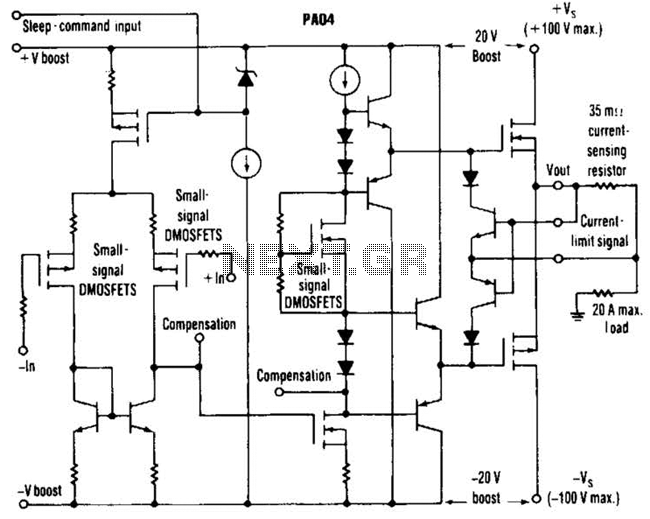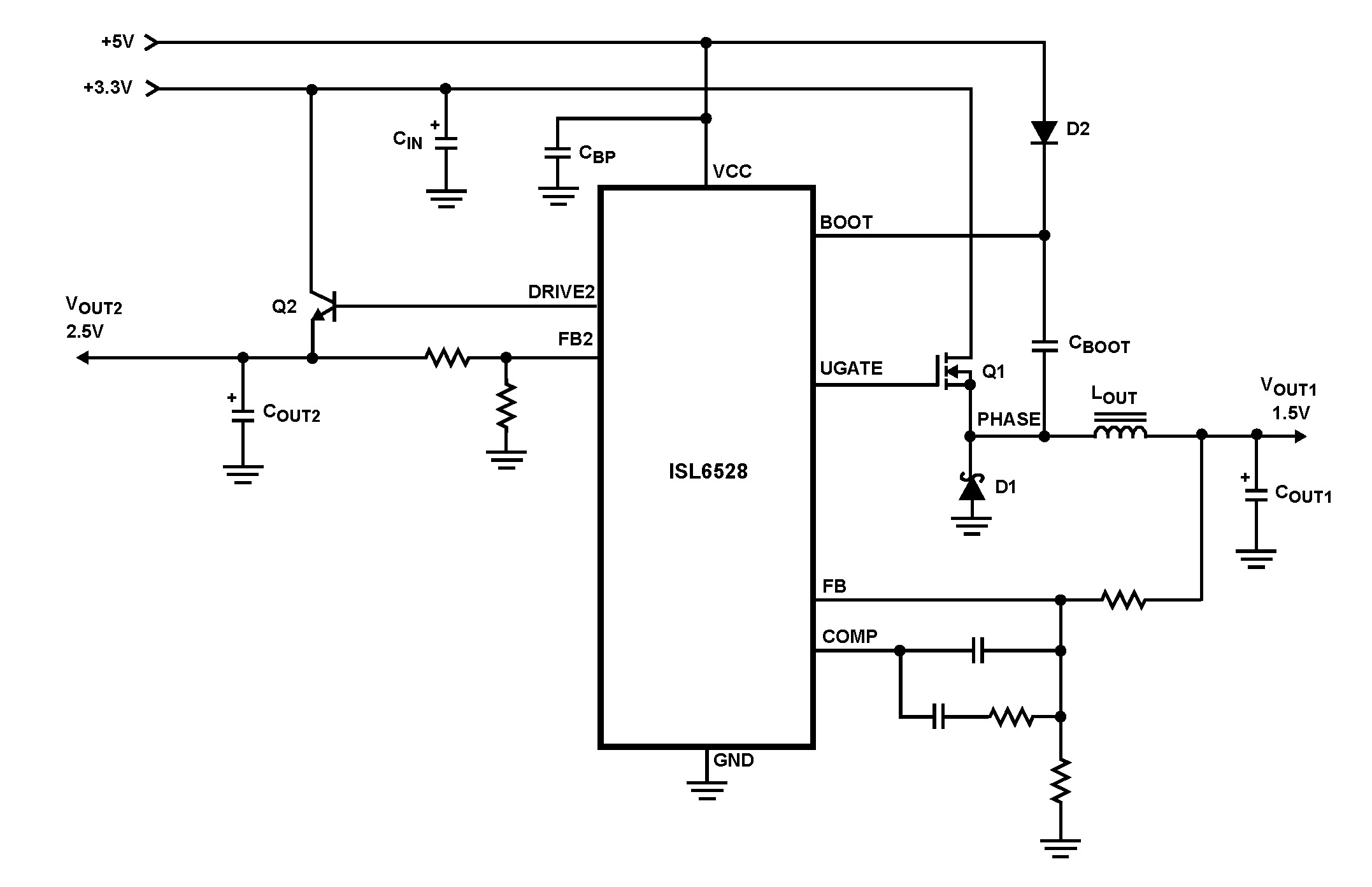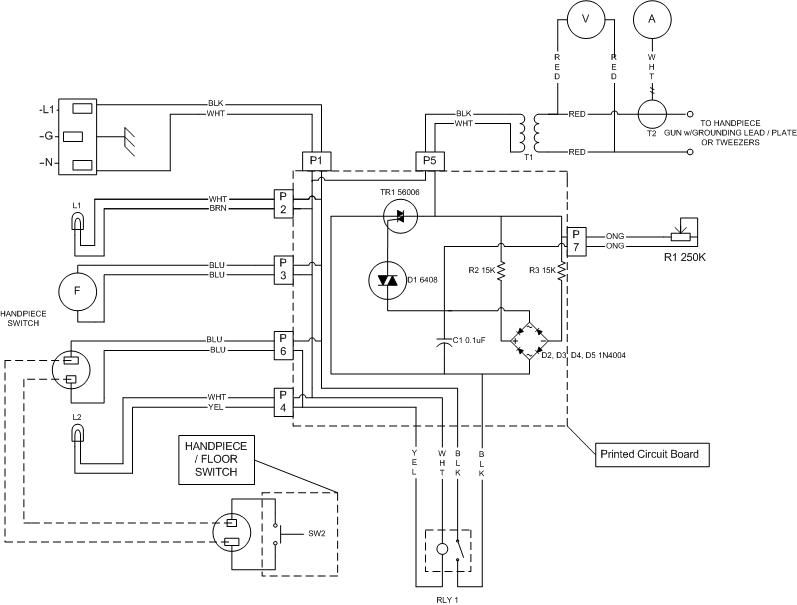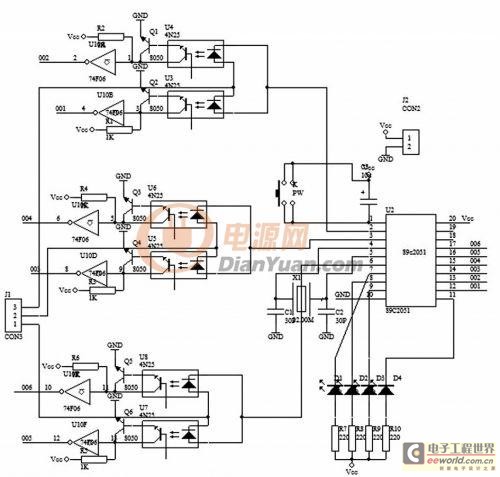
Switch-Selected Fixed-Voltage Power Supply
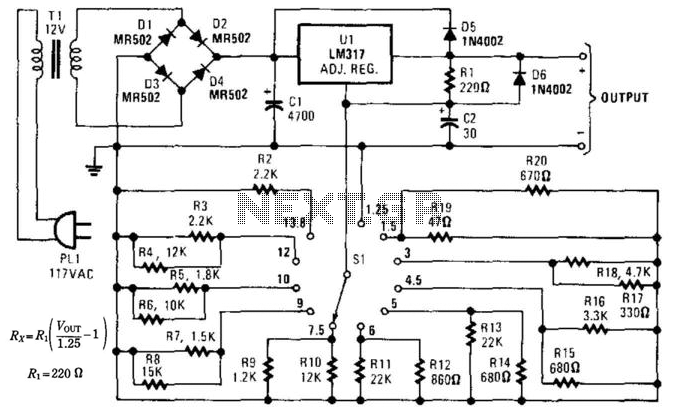
This supply can function as a battery eliminator for various devices, such as tape recorders, small radios, clocks, and more. A resistance is selected to provide a predetermined output voltage. In this circuit, various commonly used supply voltages produced by batteries were chosen, but any voltages up to the rating of the transformer can be generated by selecting an appropriate resistor. It is important to ensure adequate heatsinking for the voltage regulator.
This circuit serves as a versatile power supply, capable of replacing batteries in devices that require specific voltage levels. The design utilizes a transformer (Tl) to step down the mains voltage to a lower AC voltage, which is then rectified by a diode bridge or a single diode to convert the AC voltage to DC. The output voltage is regulated using a voltage regulator (Ul), which maintains a steady output despite variations in load current or input voltage.
The selection of the resistor is crucial as it determines the output voltage based on the desired application. By choosing resistors of different values, the circuit can be tailored to supply various voltages commonly used in consumer electronics. For instance, a resistor value that corresponds to 9V, 12V, or even 5V can be utilized depending on the requirements of the device being powered.
In addition, it is essential to incorporate adequate heatsinking for the voltage regulator (Ul) to dissipate heat generated during operation. This prevents thermal shutdown or damage to the regulator, ensuring reliable performance over extended periods of use. The heatsink should be selected based on the power dissipation calculated from the input voltage, output voltage, and load current.
Overall, this battery eliminator circuit is a practical solution for powering devices that are typically reliant on battery power, offering convenience and cost savings in the long term. Proper component selection and thermal management are key factors in achieving an efficient and reliable power supply. This supply can serve as a battery eliminator for various devices (such as tape recorders, small radios, clocks, etc.). Si selects a resistance that is predetermined to provide a preselected output voltage. In this circuit, various commonly used supply voltages produced by batteries were chosen, but any voltages up to the rating of Tl (approximately) can be produced by choosing an appropriate resistor. Remember to provide adequate heatsinking for Ul.
This circuit serves as a versatile power supply, capable of replacing batteries in devices that require specific voltage levels. The design utilizes a transformer (Tl) to step down the mains voltage to a lower AC voltage, which is then rectified by a diode bridge or a single diode to convert the AC voltage to DC. The output voltage is regulated using a voltage regulator (Ul), which maintains a steady output despite variations in load current or input voltage.
The selection of the resistor is crucial as it determines the output voltage based on the desired application. By choosing resistors of different values, the circuit can be tailored to supply various voltages commonly used in consumer electronics. For instance, a resistor value that corresponds to 9V, 12V, or even 5V can be utilized depending on the requirements of the device being powered.
In addition, it is essential to incorporate adequate heatsinking for the voltage regulator (Ul) to dissipate heat generated during operation. This prevents thermal shutdown or damage to the regulator, ensuring reliable performance over extended periods of use. The heatsink should be selected based on the power dissipation calculated from the input voltage, output voltage, and load current.
Overall, this battery eliminator circuit is a practical solution for powering devices that are typically reliant on battery power, offering convenience and cost savings in the long term. Proper component selection and thermal management are key factors in achieving an efficient and reliable power supply. This supply can serve as a battery eliminator for various devices (such as tape recorders, small radios, clocks, etc.). Si selects a resistance that is predetermined to provide a preselected output voltage. In this circuit, various commonly used supply voltages produced by batteries were chosen, but any voltages up to the rating of Tl (approximately) can be produced by choosing an appropriate resistor. Remember to provide adequate heatsinking for Ul.
